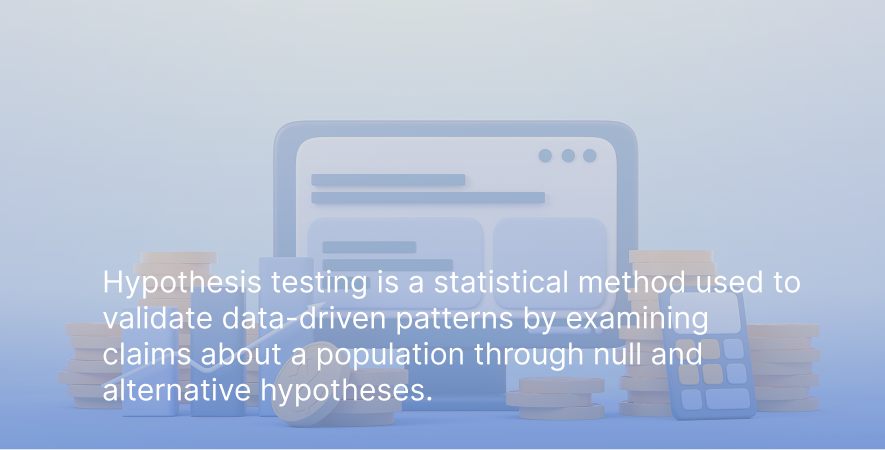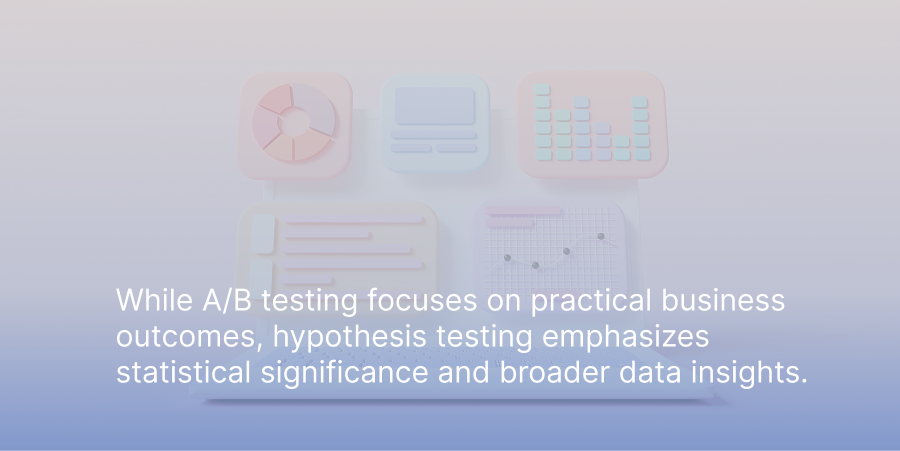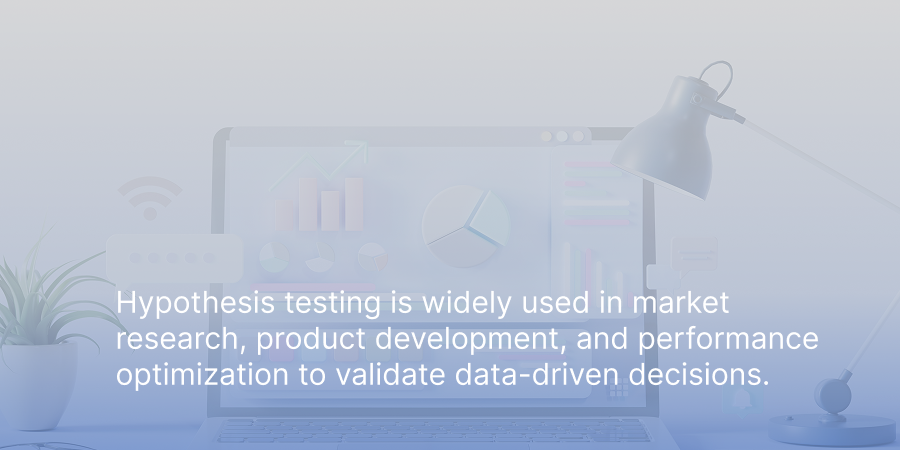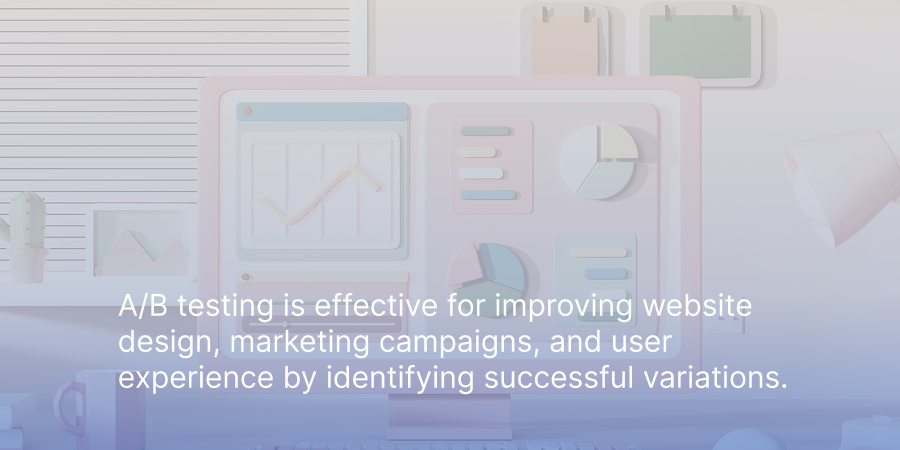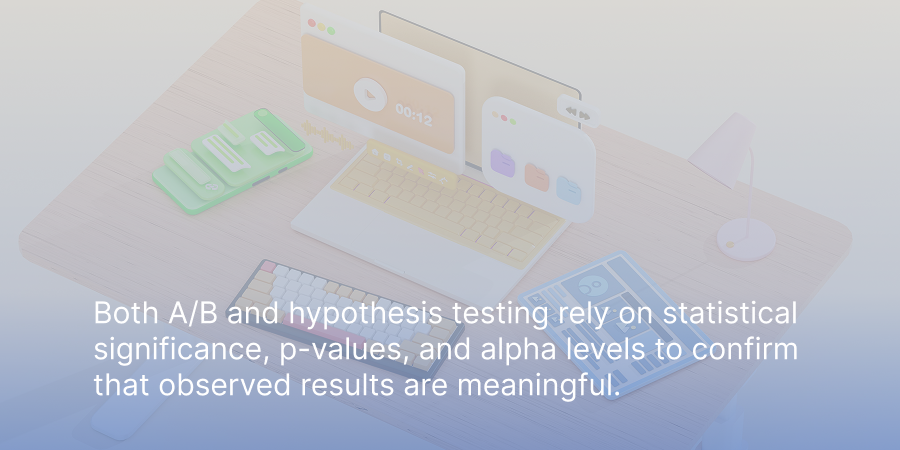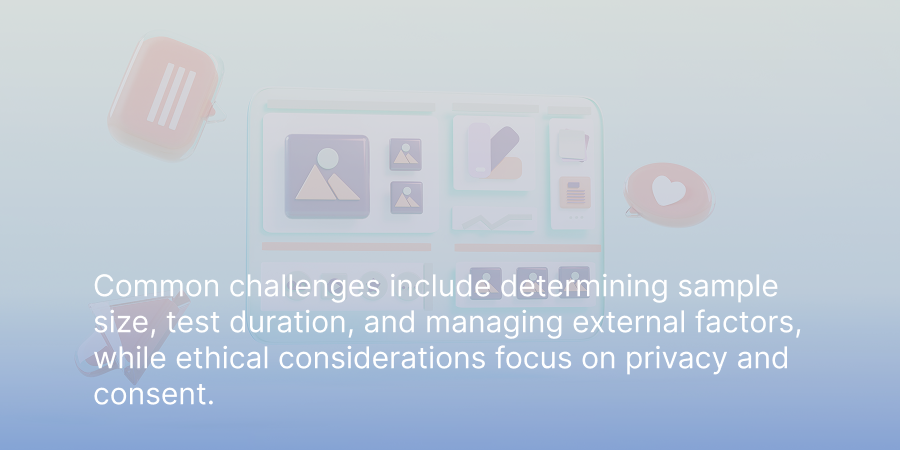When it comes to making data-driven decisions in marketing and research, understanding the differences between A/B testing and hypothesis testing is crucial. A/B testing compares two versions to see which performs better in real-world scenarios. Hypothesis testing validates assumptions about a population through statistical methods. This article will clarify these differences and guide you on when to use each.
Key Takeaways
- Hypothesis testing is designed to validate observed patterns in data through statistical methods, while A/B testing specifically compares two variations to determine which performs better.
- Key differences include methodological approaches, with A/B testing focusing on practical significance for business outcomes and hypothesis testing emphasizing statistical significance based on sample data.
- Both testing methods require adherence to best practices, including ensuring data quality, avoiding biases through randomization, and recognizing external factors that may influence results.
Defining Hypothesis Testing
Hypothesis testing serves as a fundamental component of statistical analysis, enabling the verification of data-driven patterns and separating genuine phenomena from those that might appear by random chance. This process entails creating hypotheses which are then subjected to examination using various statistical techniques. Essentially, hypothesis testing determines if the data collected can substantiate a particular claim regarding a population.
This analytical procedure comprises the steps of setting up both a null hypothesis and an alternative hypothesis, selecting an appropriate test statistic for these hypotheses, and concluding whether or not the outcomes obtained through this method demonstrate statistical significance.
The Null Hypothesis
In hypothesis testing, the null hypothesis is established as a default premise that there is no significant effect or difference between populations under examination. It posits an absence of association among variables and provides a benchmark for evaluation when contrasting both the null and alternative hypotheses.
During the execution of a hypothesis test, we maintain the null hypothesis if the p-value obtained falls at or below the predefined alpha threshold. This outcome suggests that based on observed data, there isn’t adequate evidence to discard it.
The Alternative Hypothesis
The alternative hypothesis posits that there is a noteworthy effect or variance, which counters the null hypothesis’s claim of no relationship between variables. This hypothesis offers an opposing perspective by asserting the existence of a connection where the null assumes there is none.
During A/B testing, individuals are distributed at random into distinct groups to examine if a significant impact can be observed in line with what the alternative hypothesis proposes.
Choosing Test Statistics
In the realm of hypothesis testing, it is vital to choose the right test statistics because this choice impacts how likely we are to accurately reject the null hypothesis. There’s a commonly accepted benchmark for making such decisions: a significance level set at 0.05, which corresponds to the risk of making a Type I error.
Grasping the concept of statistical power, which is usually targeted at 80%, is essential in gauging whether sample sizes are sufficient enough to precisely identify significant effects. This step is crucial so that one can trust in the dependability and validity of the outcomes produced by the testing process.
Understanding A/B Testing
Split testing, also known as A/B testing, is a method utilized to compare the performance of two different versions of a product to ascertain which one performs better. In contrast to hypothesis testing – which involves drawing conclusions about population parameters from sample data – A/B testing concentrates on conducting a head-to-head comparison between two variants in order to establish which is more effective.
Designed expressly for assessing varying iterations of a webpage or application, this technique serves as an invaluable instrument in the realm of digital marketing and enhancing products.
Designing an A/B Test
Effective A/B testing starts with a clear hypothesis that encapsulates the changes being tested and their expected impacts. This hypothesis guides the design and execution of the test, ensuring it is focused and relevant. Identifying a single design element to modify is crucial for isolating the effects of that specific change.
Random selection and assignment of participants minimize bias and enhance the credibility of the results, making the experimental design robust.
Running the Test
Conducting an A/B test entails simultaneously presenting two different versions to separate segments of users and assessing success based on specific metrics. It’s common practice for an A/B test to last around 30 days, providing ample opportunity to gather significant data.
During this time frame, it is essential to collect user engagement statistics like the duration of user visits on a webpage, as these are key indicators of performance.
Analyzing Results
It is essential to scrutinize the outcomes of an A/B test to discern which variant of content yields superior results in line with established metrics. Such benchmarks serve as definitive standards for assessing how each version fares in the A/B testing process.
Leveraging the knowledge obtained from this evaluation can inform decisions grounded in data, aimed at boosting user interaction and refining strategies for content deployment.
Key Differences Between A/B Testing and Hypothesis Testing
A/B testing and hypothesis testing share a foundation in statistical analysis, yet they differ significantly. A/B testing, which may also be called split or bucket testing, specifically applies hypothesis-testing approaches to directly compare two different versions of content in order to evaluate their performance.
Both approaches prioritize the importance of reaching statistical method significance to confirm that the results obtained are credible and not simply occurring by random chance.
Methodological Differences
A/B testing is Based on a simple controlled experiment structure that includes control groups to evaluate the effects of different variables. This approach frequently employs randomized controlled trials in order to reduce bias.
On the other hand, hypothesis testing can involve more complex experimental designs that incorporate multiple factors and diverse statistical techniques tailored to the study’s design. In both approaches, selecting an appropriate test statistic is essential for making decisions about accepting or rejecting the null hypothesis by analyzing sample data.
Application Scenarios
Companies engage in hypothesis testing within market research to evaluate customer tastes and confirm trends within the marketplace. By verifying suppositions related to consumer conduct using gathered data, this approach allows firms to better customize their products and services.
Conversely, A/B testing is frequently employed for refining particular aspects of marketing like website designs or promotional tactics. This is done by juxtaposing numerous variations to discern their effect on engaging users.
Outcome Interpretation
A/B testing is geared toward understanding the practical implications of two different versions, with an emphasis on discerning which one enhances business goals more effectively through metric-based decisions.
On the other hand, hypothesis testing concentrates on establishing whether a variation has a significant effect on a dataset. It evaluates outcomes based on statistical significance and considers how probable these results are if the null hypothesis were true.
Practical Applications of Hypothesis Testing in Business
Hypothesis testing aids in making decisions based on data, empowering organizations to evaluate alterations and their effects on business results. This process is employed across different sectors to draw conclusions from sample data, which helps companies enhance strategies that may result in heightened income and better customer interaction.
It has practical uses in areas such as market research, the development of products, and the optimization of performance.
Market Research
Hypothesis testing in market research identifies the most effective strategies for improving key performance indicators like sales and user retention. Reliable data sources, such as analytics and user feedback, are crucial for forming valid test hypotheses.
Controlling for variables like user demographics is essential to isolate the effects of the changes being tested.
Product Development
In product development, hypothesis testing is essential for determining if newly developed features are well-received by users prior to a wide release. This process ensures that the new additions meet customer demands and anticipations, thus decreasing the likelihood of unsuccessful products.
By conducting tests on their hypotheses about a product, teams can confirm whether their presuppositions are accurate, which in turn diminishes potential hazards associated with introducing novel developments.
Performance Optimization
By employing hypothesis testing, organizations gain valuable insights that contribute to ongoing enhancements in their operational tactics. It ensures the rectification of even slight inaccuracies in data integrity to avoid conclusions that could lead astray. Utilizing this approach aids businesses in progressively honing their procedures and bolstering key performance indicators, thereby optimizing performance over time.
Practical Applications of A/B Testing in Business
Systematic experimentation with different components such as headlines and call-to-action buttons through A/B testing can significantly boost conversion rates in many business contexts. This method enables companies to test alternative versions of their websites or promotional content to see which variant is more successful at fostering user engagement and increasing conversions.
The potency of A/B testing is amplified when businesses continually revisit and refine their assumptions based on the results from these tests.
Website Optimization
Through A/B testing, different versions of digital marketing components—such as website pages, emails, and ads—are assessed to ascertain the superior performer in driving user engagement. By pinpointing the optimal design or functionality with this method, not only is user experience improved, but also conversion rates and engagement levels are increased.
Marketing Campaigns
A/B testing in marketing initiatives serves as a crucial tool for determining the most impactful strategies and content through direct comparison of varying audience engagement tactics. By employing this technique, companies can discern which specific design features or messages elicit the strongest response from their target demographic, ultimately enhancing the efficiency of their campaigns.
User Experience Improvements
Experimentation with different elements of the user interface through A/B testing is crucial for assessing whether design alterations lead to increased user contentment. By conducting such tests, improvements in user satisfaction and retention can be achieved, providing valuable insight into the impact that these design modifications have on user engagement and loyalty.
Statistical Significance in Testing
Both A/B testing and hypothesis testing rely heavily on the concept of statistical significance to evaluate if the outcomes observed can be attributed to random variation or reflect genuine disparities within a larger statistical framework. Typically, in A/B testing, metrics such as user engagement and conversion rates are used for reporting results. In contrast, hypothesis testing utilizes p-values and confidence intervals to establish the level of statistical significance.
Setting an alpha level at 5% equates to possessing a 95% confidence in the findings’ validity, thus bolstering assurance that any conclusions made are dependable.
P-Value and Alpha Levels
In both A/B testing and hypothesis testing, p-values are essential in assessing whether the test results have statistical significance. This ensures that any observed differences when reviewing A/B test outcomes aren’t simply occurring by random chance.
Companies utilize hypothesis testing to evaluate variations in key metrics, such as conversion rates. This process contributes to ongoing improvements in their performance.
Type I and Type II Errors
When the null hypothesis is mistakenly dismissed, a Type I error takes place, resulting in an erroneous positive finding. On the other hand, a Type II error arises when a test incorrectly retains an inaccurate null hypothesis, yielding an incorrect negative outcome.
It is essential to reduce these errors to preserve the reliability of test results and guarantee legitimate conclusions.
Power Analysis
Determining the required sample size to identify a specific effect magnitude with a designated confidence level is fundamental, and power analysis serves as the crucial technique for achieving this. It guarantees that the sample size is sufficient to derive significant insights and consistently recognize genuine effects in statistical assessments.
In A/B testing scenarios, securing an adequate sample size is pivotal for confirming that outcomes carry statistical significance, which frequently necessitates conducting the test over a period of one to two weeks.
Best Practices for Conducting A/B Tests and Hypothesis Tests
To obtain valid and actionable insights from A/B tests and hypothesis testing, it is essential to operate within a comprehensive statistical framework while adhering to established best practices. It’s imperative to have a well-defined testing structure in place for results that are consistent and can be interpreted with confidence.
Meticulous preparation is key in mitigating potential biases, which guarantees that the outcomes of your analysis truly represent the impact of the variables being tested.
Ensuring Data Quality
Ensuring that data is of high quality is critical for obtaining reliable results from an A/B test since even small inaccuracies can produce false insights. It’s vital to establish key performance indicators (KPIs) at the outset of creating an A/B test in order to precisely assess its effectiveness.
The integrity and accuracy of data must be preserved by employing meticulous data gathering methods, exact tracking metrics, and keeping the information consistent throughout the entire testing process.
Randomization and Control
Randomization in A/B testing ensures that variations receive an unbiased distribution of user traffic, eliminating selection biases that could skew results. Randomly assigning users to variations in A/B testing minimizes biases, ensuring fair comparisons.
Reliable data collection further reduces the risk of biases, leading to valid conclusions.
Continuous Improvement
Emphasizing the importance of persistent enhancement, A/B testing necessitates regular review and improvement of theories and methodologies. By employing constant testing approaches, organizations can progressively optimize performance by making incremental adjustments informed by test results and adjusting to evolving circumstances.
Challenges and Considerations
Several obstacles confront A/B testing and hypothesis testing that have been published, such as calculating the appropriate sample size, deciding on the length of the test, and managing external factors which might distort outcomes. Concentrating on an excessive number of metrics is a frequent issue that raises the risk of encountering false positives.
To prevent confusing variables and guarantee credible results from tests, meticulous preparation is essential.
Ethical Considerations
During the A/B testing process, it’s essential to secure informed consent from those involved, honoring their right to autonomy. Safeguarding data privacy is also a top priority, with an emphasis on keeping participants’ personal information secure at all stages of the test.
Upholding ethical practices throughout A/B testing is vital for maintaining both the integrity and credibility of the results obtained.
Dealing with External Factors
It is critical to account for external influences that may impact the results of A/B and hypothesis testing, as these variables must be managed to maintain the integrity of the findings. Employing control groups and random assignment aids in eradicating biases, confirming that any effects noted are a result of the alterations under examination.
Enhancing strategies through ongoing refinement assists in more effectively adjusting to external factors over time.
Summary
In summary, recognizing the distinct differences between A/B testing and hypothesis testing is essential for informed decision-making based on data. While A/B testing is superior in fine-tuning specific aspects of marketing and enhancing user interaction, hypothesis testing offers a wider framework for confirming theories and honing overall strategies. Each technique holds significant importance in boosting organizational performance and fostering ongoing enhancement.
To capitalize on these methods of testing effectively, companies must commit to best practices that include maintaining high-quality data, employing randomization techniques, and upholding ethical standards. Cultivating an environment where continuous experimentation and improvement are valued will equip businesses with the agility needed to navigate evolving market conditions and retain their competitive advantage.
Frequently Asked Questions
What is the main difference between A/B testing and hypothesis testing?
The main difference is that A/B testing focuses on comparing specific versions of a product to determine which one performs better, whereas hypothesis testing evaluates a broader hypothesis about population parameters using sample data.
How does randomization help in A/B testing?
Randomization is crucial in A/B testing as it distributes user traffic evenly across variations, minimizing biases and allowing for fair comparisons.
This enhances the reliability of the test results.
Why is statistical significance important in testing?
Statistical significance plays a vital role as it allows us to determine whether the results observed are authentic or simply a product of random variation, thereby facilitating the drawing of dependable and valid conclusions during hypothesis testing.
What are Type I and Type II errors?
Type I errors involve rejecting a true null hypothesis (false positive), whereas Type II errors occur when a false null hypothesis fails to be rejected (false negative).
Understanding these errors is crucial for accurate hypothesis testing.
How can businesses ensure data quality in testing?
To ensure data quality in testing, businesses should implement systematic data collection methods, accurately track metrics, and uphold data integrity throughout the testing process.
This approach will lead to reliable and actionable insights.



